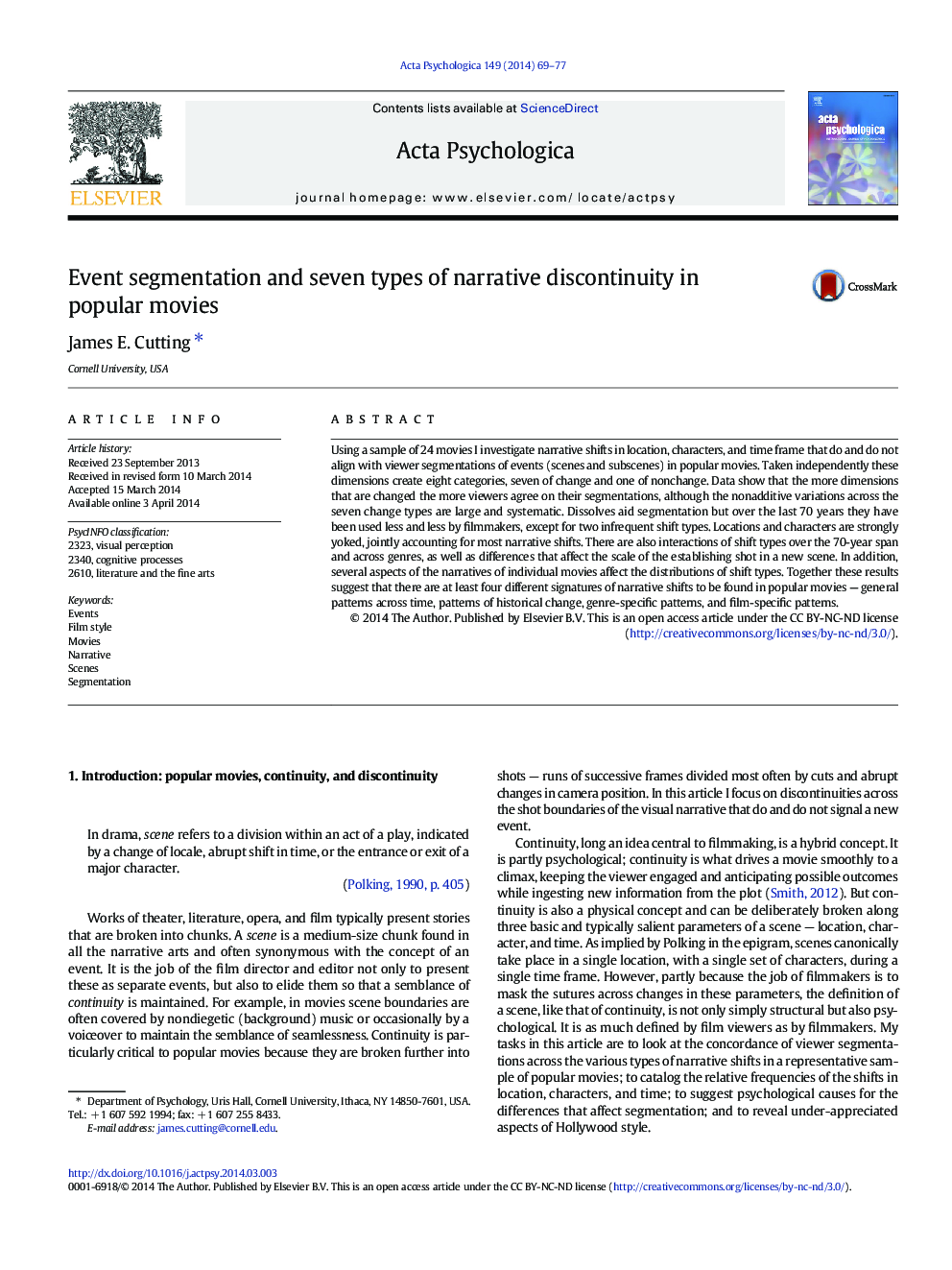| کد مقاله | کد نشریه | سال انتشار | مقاله انگلیسی | نسخه تمام متن |
|---|---|---|---|---|
| 7277670 | 1473609 | 2014 | 9 صفحه PDF | دانلود رایگان |
عنوان انگلیسی مقاله ISI
Event segmentation and seven types of narrative discontinuity in popular movies
ترجمه فارسی عنوان
تقسیم بندی رویداد و هفت نوع اختلاط روایت در فیلم های محبوب
دانلود مقاله + سفارش ترجمه
دانلود مقاله ISI انگلیسی
رایگان برای ایرانیان
کلمات کلیدی
2323، ادراک بصری، 2340، فرآیندهای شناختی، 2610، ادبیات و هنرهای زیبا، مناسبت ها، سبک فیلم، فیلم ها، روایت، صحنه های، تقسیم بندی،
موضوعات مرتبط
علوم زیستی و بیوفناوری
علم عصب شناسی
علوم اعصاب شناختی
چکیده انگلیسی
Using a sample of 24 movies I investigate narrative shifts in location, characters, and time frame that do and do not align with viewer segmentations of events (scenes and subscenes) in popular movies. Taken independently these dimensions create eight categories, seven of change and one of nonchange. Data show that the more dimensions that are changed the more viewers agree on their segmentations, although the nonadditive variations across the seven change types are large and systematic. Dissolves aid segmentation but over the last 70Â years they have been used less and less by filmmakers, except for two infrequent shift types. Locations and characters are strongly yoked, jointly accounting for most narrative shifts. There are also interactions of shift types over the 70-year span and across genres, as well as differences that affect the scale of the establishing shot in a new scene. In addition, several aspects of the narratives of individual movies affect the distributions of shift types. Together these results suggest that there are at least four different signatures of narrative shifts to be found in popular movies - general patterns across time, patterns of historical change, genre-specific patterns, and film-specific patterns.
ناشر
Database: Elsevier - ScienceDirect (ساینس دایرکت)
Journal: Acta Psychologica - Volume 149, June 2014, Pages 69-77
Journal: Acta Psychologica - Volume 149, June 2014, Pages 69-77
نویسندگان
James E. Cutting,
